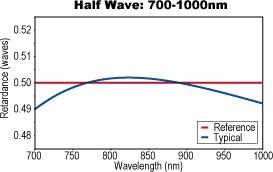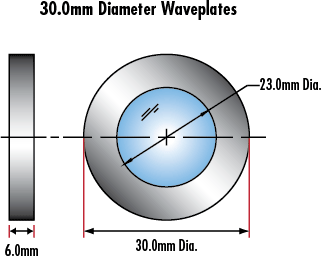
| Prix sur Quantité | |
|---|---|
| Qté 1-5 | €1.081,50 prix unitaire |
| Qté 6+ | €907,43 prix unitaire |
| Need More? | Demande de Devis |
Les Lames à Retard (Lames d'Onde) Achromatiques produisent un décalage de phase constant indépendant de la longueur d'onde utilisée. Cette indépendance à la longueur d'onde est obtenue en utilisant deux matériaux cristallins biréfringents différents. Les décalages relatifs de retard le long de la gamme spectrale sont compensés par les deux matériaux utilisés. Les Lames à Retard Achromatiques, avec leur réponse uniforme, sont idéales pour une utilisation avec des lasers accordables, des systèmes à raie laser multiple et avec d'autres sources spectrales à large bande.
Conçues pour être utilisées à un angle d'incidence de 0°, une déviation de ±3° entraîne un changement de retard inférieur à 1%. Les lames à retard ayant une ouverture utile de 23 mm sont accolées. Toutes les lames d'onde achromatiques (retardateurs) sont montées dans un logement en aluminium anodisé dont l'axe rapide est clairement indiqué.


ou consulter les numéros d’autres pays
facile à utiliser
entrer les numéros de stock pour commencer
Copyright 2023 | Edmund Optics, Ltd Unit 1, Opus Avenue, Nether Poppleton, York, YO26 6BL, UK
POLITIQUE DE CONFIDENTIALITÉ | POLITIQUE DE COOKIES | CONDITIONS GÉNÈRALES | CONDITIONS GÉNÈRALES B2C | MENTIONS LÉGALES | ACCESSIBILITÉ
L'entreprise Edmund Optics GmbH en Allemagne agit comme un mandataire d'Edmund Optics BV aux Pays-Bas.
Le titulaire du contrat est Edmund Optics BV aux Pays-Bas.
The FUTURE Depends On Optics®